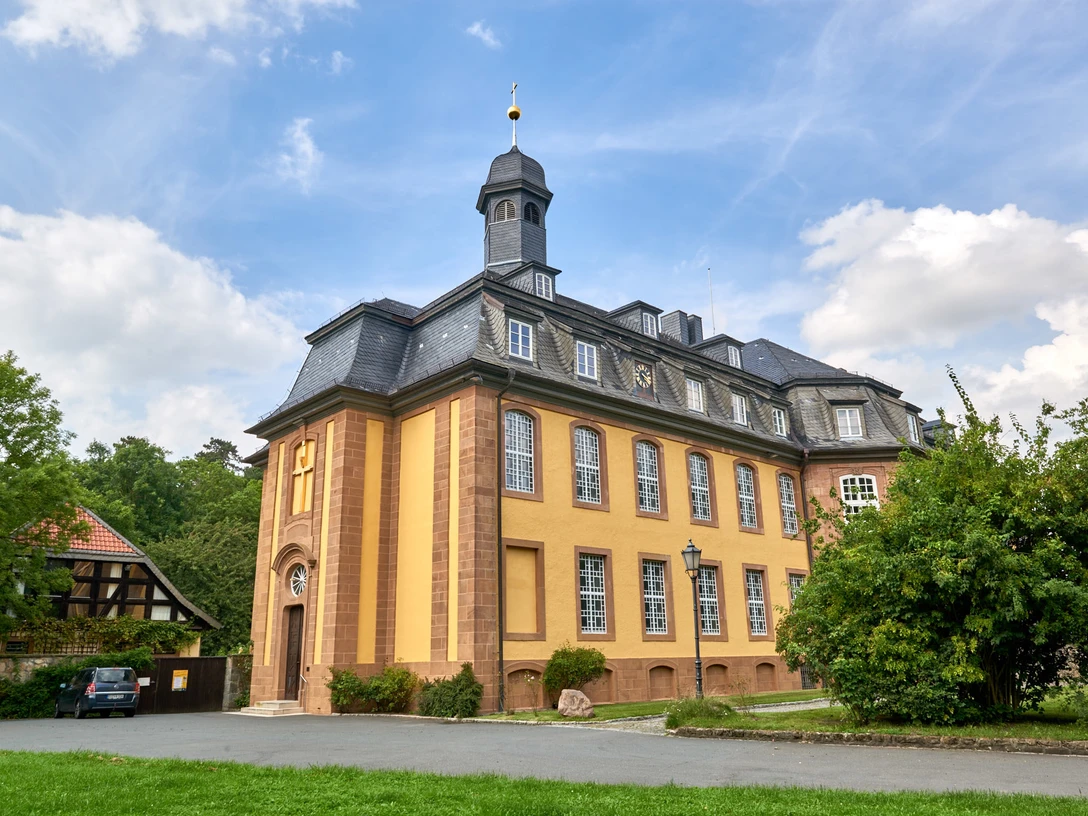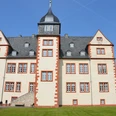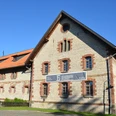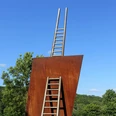Liebenburg Castle:
In 1292, Bishop Siegfried II of Hildesheim built Levenborch Castle on the foothills of the Salzgitter ridge. It was the largest in the northern Harz foreland and was heavily contested during the Thirty Years' War. The castle fell into ruin at the end of the 17th century. Today, only the keep, the so-called Hausmannsturm and the flanking tower, remains of the castle tower and parts of the old castle walls are still standing. Prince-Bishop Clemens August von Hildesheim had the castle demolished and built a baroque palace on the ramparts and fortifications from 1756. The ceiling paintings of the baroque church are particularly worth mentioning, as is the sculpture park with exhibits made of steel and stone, which is part of the "Street of Peace". (Source: Niedersachsen, Gauweiler-Verlag)
Marriage in the flanking tower:
You can get married in the over seven-hundred-year-old tower from Monday to Friday from 8:30 am to 12:00 pm and additionally on Monday, Tuesday and Thursday from 1:00 pm to 4:00 pm. (Liebenburg registry office, tel. 05346 / 900035)
Baroque palace:
The exterior of the baroque palace was completed between 1754 and 1760. By 1760, the construction costs amounted to 26,070 Reichstaler (Rthl.). It was not fully completed until 1815 to 1818, two years after the death of its builder, Prince-Bishop Clemens August. In the western part of the palace is the beautiful Catholic Baroque church with the famous ceiling fresco by Joseph Gregori Winck. For many years, the east wing housed the district court. For over thirty years, the castle has been the home and workplace of the internationally renowned painter and graphic artist Prof. Gerd Winner.
Baroque church:
The hall church has a straight chancel end and a three-sided gallery supported by sandstone columns.
The 15.50-metre-long and 7.20-metre-wide flat ceiling is supported by the slender wooden double columns of the gallery. The painting of the ceiling is the main work of the fresco painter Joseph Gregor Winck (1710-81), who originally came from Deggendorf. Winck spent two years painting this ceiling, the largest baroque ceiling painting in Lower Saxony with an area of approx. 110 square meters, which was restored in 1985/86. The fresco secco painting bears his signature and the date 1758. The choice of subject - ten episodes from the life of St. Clemens Romanus - was an allusion to the name of the building's owner.
In 1292, Bishop Siegfried II of Hildesheim built Levenborch Castle on the foothills of the Salzgitter ridge. It was the largest in the northern Harz foreland and was heavily contested during the Thirty Years' War. The castle fell into ruin at the end of the 17th century. Today, only the keep, the so-called Hausmannsturm and the flanking tower, remains of the castle tower and parts of the old castle walls are still standing. Prince-Bishop Clemens August von Hildesheim had the castle demolished and built a baroque palace on the ramparts and fortifications from 1756. The ceiling paintings of the baroque church are particularly worth mentioning, as is the sculpture park with exhibits made of steel and stone, which is part of the "Street of Peace". (Source: Niedersachsen, Gauweiler-Verlag)
Marriage in the flanking tower:
You can get married in the over seven-hundred-year-old tower from Monday to Friday from 8:30 am to 12:00 pm and additionally on Monday, Tuesday and Thursday from 1:00 pm to 4:00 pm. (Liebenburg registry office, tel. 05346 / 900035)
Baroque palace:
The exterior of the baroque palace was completed between 1754 and 1760. By 1760, the construction costs amounted to 26,070 Reichstaler (Rthl.). It was not fully completed until 1815 to 1818, two years after the death of its builder, Prince-Bishop Clemens August. In the western part of the palace is the beautiful Catholic Baroque church with the famous ceiling fresco by Joseph Gregori Winck. For many years, the east wing housed the district court. For over thirty years, the castle has been the home and workplace of the internationally renowned painter and graphic artist Prof. Gerd Winner.
Baroque church:
The hall church has a straight chancel end and a three-sided gallery supported by sandstone columns.
The 15.50-metre-long and 7.20-metre-wide flat ceiling is supported by the slender wooden double columns of the gallery. The painting of the ceiling is the main work of the fresco painter Joseph Gregor Winck (1710-81), who originally came from Deggendorf. Winck spent two years painting this ceiling, the largest baroque ceiling painting in Lower Saxony with an area of approx. 110 square meters, which was restored in 1985/86. The fresco secco painting bears his signature and the date 1758. The choice of subject - ten episodes from the life of St. Clemens Romanus - was an allusion to the name of the building's owner.
Good to know
Price info
Eintritt zur Burganlage frei.
More information
Führungen und Besichtigung:
Die Burganlage ist öffentlich und jederzeit zu besichtigen. Jährliche Veranstaltung im Dezember: Dämmerschoppen am Flankierungsturm und im Juni: Weinfest. (Verein zur Rettung der Burgdenkmäler, Vors. Jörg Brennecke, Tel. 05346/2876)
Für Besichtigungen der Schlosskirche wenden Sie sich bitte an das katholische Pfarramt in Liebenburg, Tel. 05346/1484. Jährliche Veranstaltung im Mai: Marienfeier im Schlossgarten.
Die Burganlage ist öffentlich und jederzeit zu besichtigen. Jährliche Veranstaltung im Dezember: Dämmerschoppen am Flankierungsturm und im Juni: Weinfest. (Verein zur Rettung der Burgdenkmäler, Vors. Jörg Brennecke, Tel. 05346/2876)
Für Besichtigungen der Schlosskirche wenden Sie sich bitte an das katholische Pfarramt in Liebenburg, Tel. 05346/1484. Jährliche Veranstaltung im Mai: Marienfeier im Schlossgarten.
License (master data)
Nördliches Harzvorland Tourismusverband e. V.
Nearby





